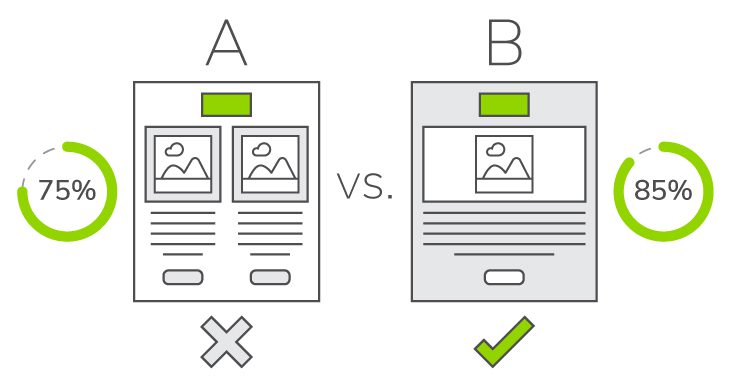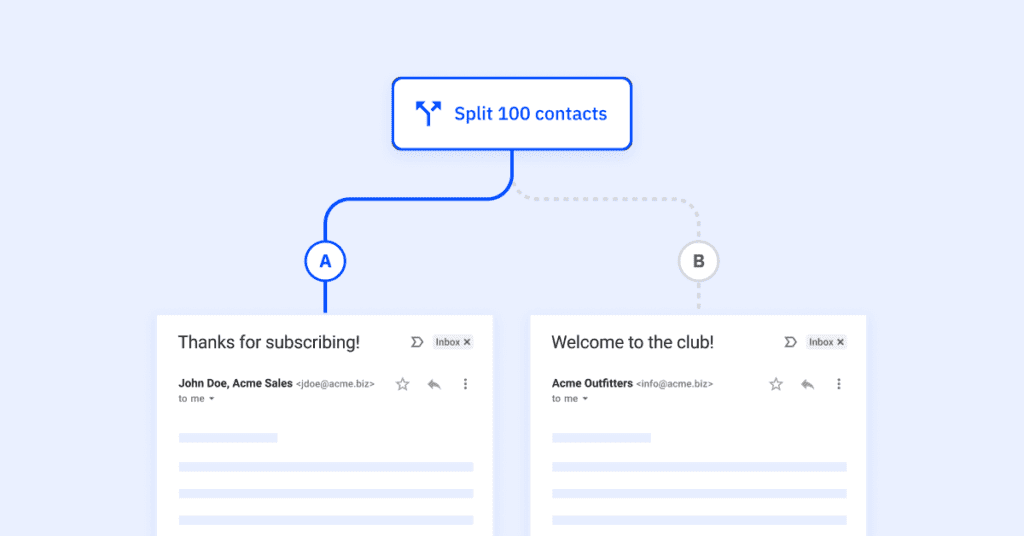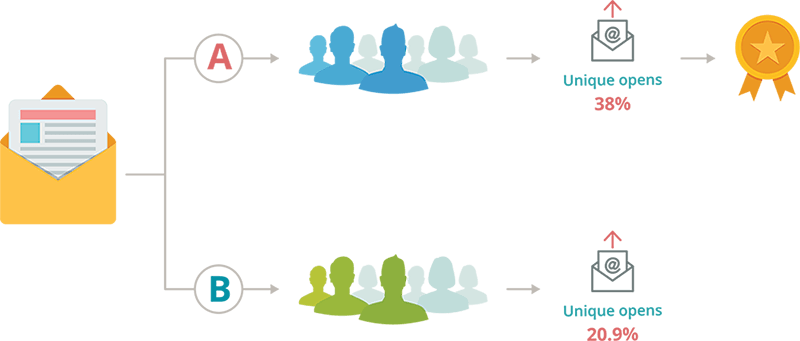Table of Contents
- 1 Introduction
- 2 What is A/B Testing?
- 3 Benefits of A/B Testing in Email Marketing
- 4 Key Elements to Test in Email Marketing
- 5 How to Conduct an A/B Test
- 6 Analyzing and Interpreting A/B Test Results
- 7 Best Practices for A/B Testing in Email Marketing
- 8 Case Studies: Successful A/B Testing Examples
- 9 A/B Testing Tools and Platforms
- 10 Overcoming Challenges in A/B Testing
- 11 Integrating A/B Testing into your Email Marketing Strategy
- 12 Conclusion
- 13 FAQs
Introduction
In today’s digital age, email marketing is a powerful tool for businesses to engage with their audience and drive conversions. However, with the increasing competition in the inbox, it is essential to optimize your email marketing strategy to ensure its effectiveness. One effective method to improve your email marketing campaigns is through A/B testing. Within the contents of this article, we will take a closer look at the concept of A/B testing, thoroughly examine its many advantages, as well as learn how it may prove beneficial in bolstering the overall effectiveness of your email marketing strategy.

Source: Everlytic
What is A/B Testing?
A/B testing, also referred to as split testing, is an approach that involves comparing two variations of a specific element to evaluate which one yields better results. When it comes to email marketing, A/B testing entails creating two distinct versions of an email campaign and dispatching them to a portion of your subscriber list for analysis purposes. By analyzing the performance metrics, you can identify which variation yields higher open rates, click-through rates, conversions, or any other desired action.
Benefits of A/B Testing in Email Marketing
A/B testing offers several benefits that can significantly enhance your email marketing strategy:
- Optimized Content: By testing different variations of subject lines, email copy, or call-to-action buttons, you can identify the most effective content that resonates with your audience, resulting in higher engagement and conversions.
- Improved Conversion Rates: A/B testing allows you to understand which elements of your email campaign contribute to higher conversion rates. By making data-driven decisions, you can optimize your emails to maximize conversions and revenue.
- Better Understanding of Audience Preferences: Through A/B testing, you gain valuable insights into your audience’s preferences and behaviors. This knowledge enables you to tailor your future campaigns to better align with their needs and interests.
- Continuous Optimization: A/B testing provides an iterative approach to improving your email marketing strategy. By consistently testing and optimizing your campaigns, you can achieve long-term success and stay ahead of the competition.
Key Elements to Test in Email Marketing
To optimize your email marketing strategy effectively, you should focus on testing specific elements within your emails:
- Subject Lines: Experiment with different lengths, tones, personalization, and keywords to determine which subject lines generate higher open rates.
- Email Copy: Test variations in the length, formatting, tone, and messaging of your email content to identify the most engaging and persuasive copy.
- Call-to-Action (CTA): Try different placements, colors, wording, and designs for your CTA buttons to determine which ones drive the highest click-through rates.
- Images and Media: Test different visuals, such as product images, lifestyle photos, or GIFs, to assess their impact on engagement and conversions.
- Sender Name: Experiment with using a personal name, company name, or a combination of both to discover which sender name leads to higher open rates.
- Timing and Frequency: Test sending your emails at different times of the day or week and vary the frequency to find the optimal timing for maximum engagement.

Source: Active Campaign
How to Conduct an A/B Test
Follow these steps to conduct an effective A/B test for your email campaigns:
- Step 1: Define Your Objective: Clearly identify the goal of your test, such as increasing open rates or improving click-through rates.
- Step 2: Select Your Variation: Decide on the specific element you want to test, such as subject lines, email copy, or CTAs.
- Step 3: Divide Your Audience: Randomly split your subscriber list into two equal segments: Group A and Group B.
- Step 4: Create Variations: Develop two versions of your email, differing only in the element you are testing.
- Step 5: Test and Measure: Send each variation to their respective groups and track key metrics, such as open rates, click-through rates, and conversions.
- Step 6: Analyze Results: Compare the performance of each variation using the predetermined metrics. Determine the winning version based on statistical significance.
- Step 7: Implement and Scale: Apply the insights gained from the A/B test to your future email campaigns and continuously refine your strategy.
Analyzing and Interpreting A/B Test Results
To ensure an accurate interpretation of your A/B test results, consider the following factors:
- Statistical Significance: Determine if the observed differences between the variations are statistically significant using appropriate statistical tests.
- Sample Size: Ensure that your test reaches a sufficient number of subscribers to generate reliable results. Smaller sample sizes may lead to inconclusive or unreliable outcomes.
- Time Frame: Allow enough time for your test to run, ensuring that your results are based on an adequate amount of data.
- Segmentation: Analyze your results based on different audience segments to uncover insights specific to certain demographics or user behaviors.
- Secondary Metrics: Consider secondary metrics, such as bounce rates, unsubscribe rates, or time spent on the website, to gain a comprehensive understanding of your email campaign’s performance.

Source: Zoho
Best Practices for A/B Testing in Email Marketing
To maximize the effectiveness of your A/B testing efforts, follow these best practices:
- Test One Element at a Time: To accurately identify the impact of a specific change, isolate and test one element at a time within your email campaigns.
- Segment Your Audience: Segment your subscriber list based on relevant criteria, such as demographics, interests, or engagement level. This allows for more targeted A/B tests and personalized content.
- Document and Learn: Keep a record of your A/B tests, documenting the variations, results, and insights gained. This knowledge will guide future optimizations and save time in the long run.
- Consistency: Maintain consistency across your email campaigns by adhering to your brand’s voice, style, and messaging. This ensures that your A/B tests focus on relevant elements and yield accurate results.
- Continuous Testing: A/B testing should be an ongoing process. Regularly test new ideas and strategies to stay ahead of evolving customer preferences and industry trends.
Case Studies: Successful A/B Testing Examples
In this case study, we are observing the impact our email marketing team had on the open and click rates for GGblue:
- Best Time of the Day: We assume that golfers woke early to play before work so we tested early morning versus afternoon to find the winner.
- After a month-long test and high confidence level based on the Klaviyo algorithm, we successfully determined the best sending time and constantly received open rate above 40% and click rate above 5%.
- Best Day of the Week: We tested weekdays, weekends, and a mix of the two to find the best day to send emails.
- Upon completion, we were able to determine the best sending day. Open rate has grown to 60% and click rate to 6%
- CTA Text A/B Testing for Various Email Topics: It is more complex and time consuming than establishing the best time to send, but we were able to determine the winning CTA text for email campaigns ranging from content, blog feature, social media feature, product feature, and major sale events.
- By the time we concluded the CTA text A/B testing phase, we had successfully grown the email attributed revenue by 30%. Email was attributing more than 25% to the total online revenue.
A/B Testing Tools and Platforms
There are several tools and platforms available to simplify and streamline the A/B testing process. Some popular options include:
- Klaviyo: Offers advanced A/B testing functionality and comprehensive email marketing features that allow for data-driven decisions.
- Mailchimp: Offers built-in A/B testing functionality and comprehensive email marketing features.
- Optimizely: Provides A/B testing capabilities across multiple channels, including email marketing.
- Litmus: Offers email testing and analytics tools to optimize your email campaigns.
- Google Optimize: Allows you to conduct A/B tests on websites and landing pages, complementing your email marketing efforts.
Overcoming Challenges in A/B Testing
While A/B testing is a valuable strategy, it is important to be aware of and address potential challenges:
- Sample Bias: Ensure your test groups represent your target audience accurately, minimizing bias and ensuring reliable results.
- Testing Frequency: Be cautious of testing too frequently, as it may lead to subscriber fatigue or lower engagement. Maintain a balance to avoid overwhelming your audience.
- Test Duration: Allow your tests to run for an adequate duration to gather a substantial amount of data. Short tests may result in inconclusive or inaccurate results.
- Data Interpretation: Seek statistical expertise or guidance to interpret your test results and avoid misinterpretation accurately.
Integrating A/B Testing into your Email Marketing Strategy
To effectively integrate A/B testing into your email marketing strategy, consider the following steps:
- Identify Goals and Metrics: Determine the key performance indicators (KPIs) you want to optimize and align your A/B tests accordingly.
- Develop a Testing Plan: Create a structured plan outlining the elements you will test, the variations to be created, and the timeline for testing.
- Execute and Analyze: Implement your A/B tests, track the results, and analyze the data to make informed decisions.
- Implement Changes: Apply the winning variations to your future email campaigns and continuously refine your strategy based on ongoing testing and analysis.
Conclusion
A/B testing is a powerful tool that empowers businesses to optimize their email marketing strategy for maximum impact. By testing different elements of your email campaigns, you can gain valuable insights into your audience’s preferences and refine your approach to achieve better engagement, conversions, and long-term success. Remember to adopt a systematic and data-driven approach, continuously test and analyze, and apply the lessons learned to continuously improve your email marketing efforts.
FAQs
Q1: How long should I run an A/B test for my email campaigns?
It is recommended to run an A/B test for at least a week or until you have collected a sufficient amount of data to ensure statistical significance.
Q2: Can I test multiple elements at once in an A/B test?
To accurately identify the impact of specific changes, it is best to test one element at a time. Testing multiple elements simultaneously may lead to ambiguous results.
Q3: Is A/B testing only applicable to subject lines and email copy?
No, A/B testing can be applied to various elements of your email campaigns, including subject lines, email copy, CTAs, images, sender names, timing, and frequency.
Q4: How often should I conduct A/B tests for my email marketing strategy?
A/B testing should be an ongoing process. Regularly test new ideas and strategies to adapt to changing customer preferences and optimize your email campaigns.
Q5: What if my A/B test results are inconclusive or yield no significant difference?
In such cases, consider testing alternative variations or focusing on different elements to optimize your email marketing strategy further.
Ready to take your email marketing to the next level? Look no further than Coalition Technologies! Our expert team is here to help you achieve exceptional results and maximize your ROI. Whether you need assistance crafting engaging email campaigns, optimizing deliverability, or designing visually stunning templates, we’ve got you covered. Don’t miss out on the opportunity to supercharge your email marketing strategy. Contact Coalition Technologies today, and let us drive your success!


